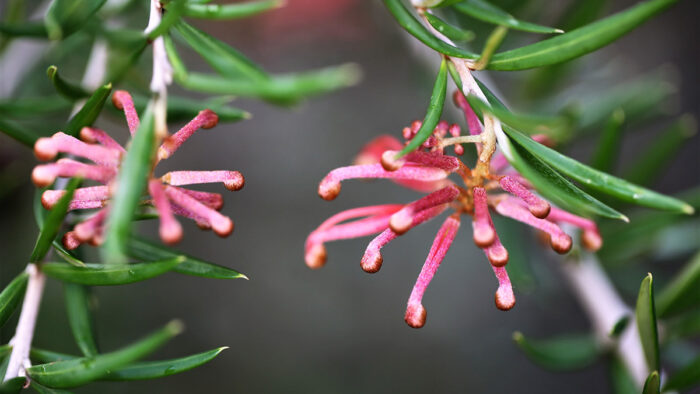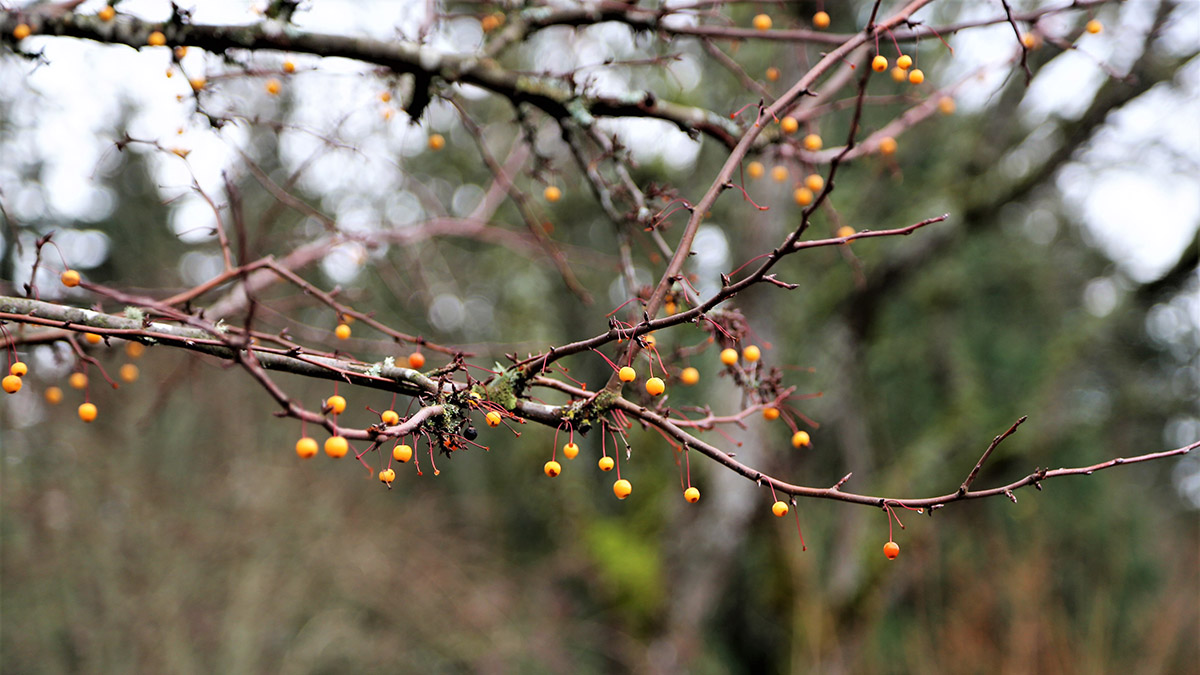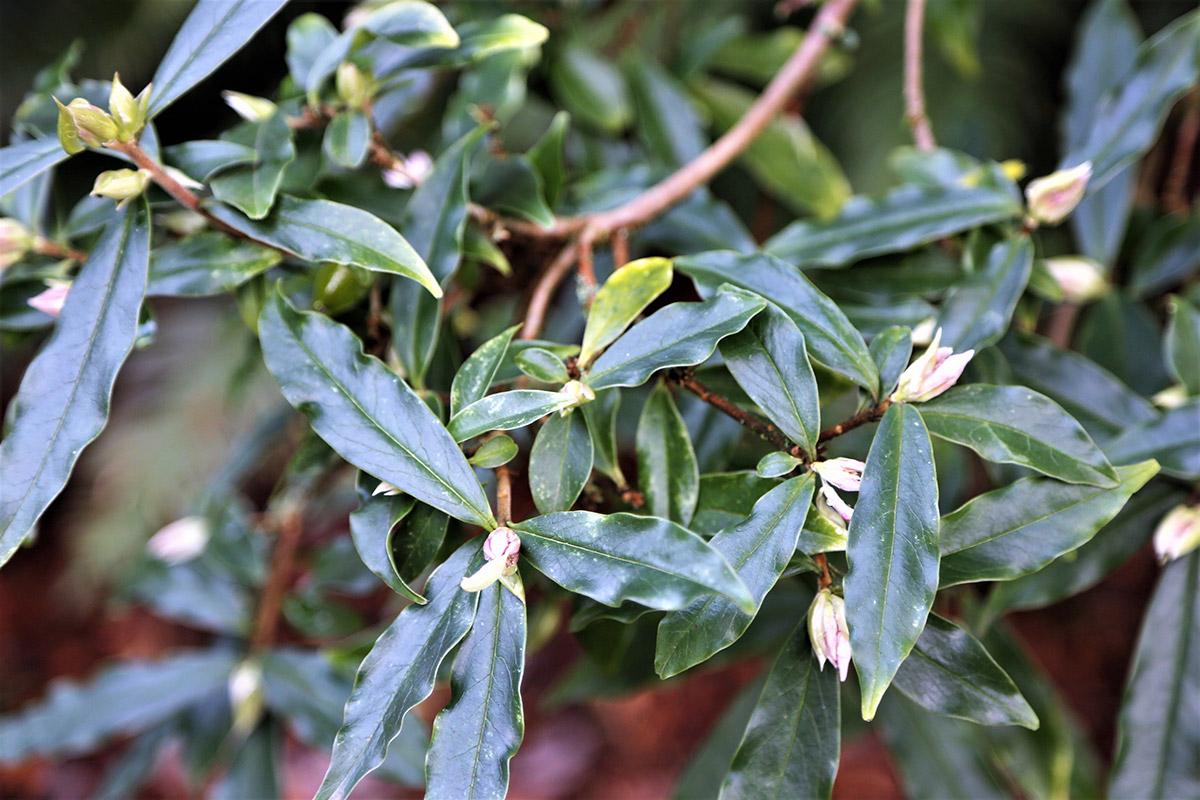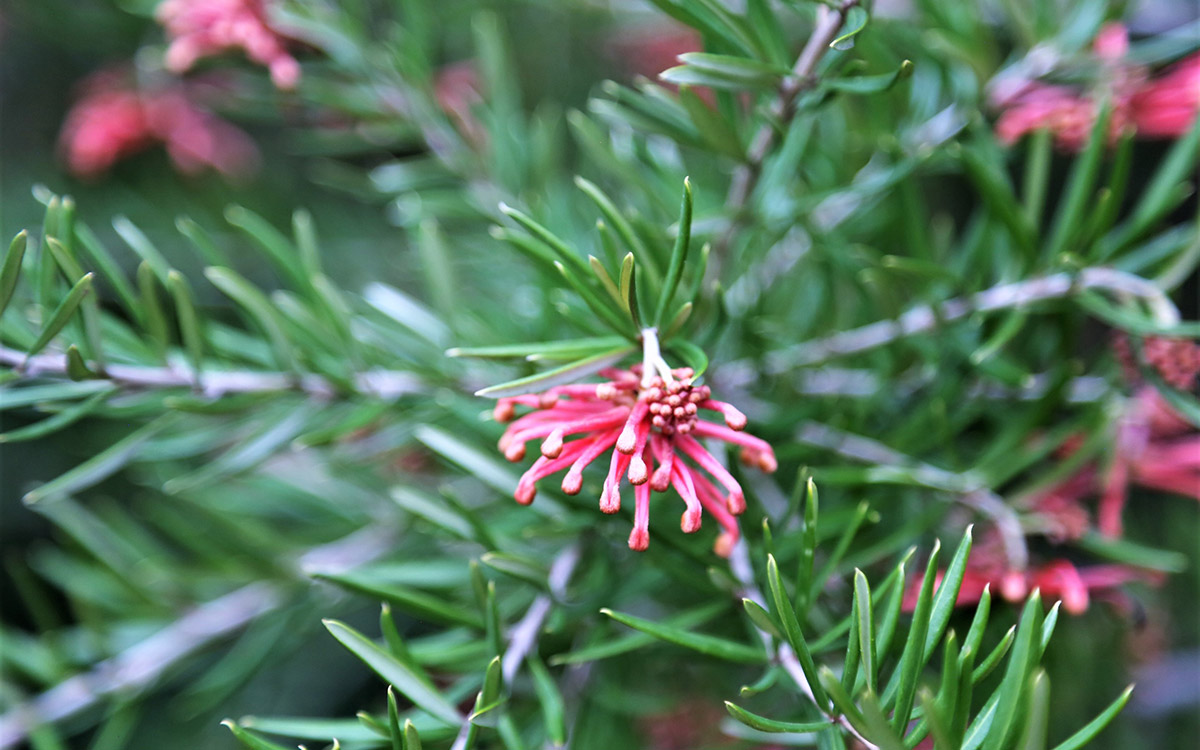
While only the bravest of gardeners will spend a lot of time in the garden in mid to late winter, the birds that live in our gardens are still very active and require a year-round supply of food to keep going. I am always looking for great plants that have multiple functions, such as looking beautiful while also helping wildlife. Not only do birds and insects enjoy the following three plants, but when you finally do get outside, you will too!

Golden Raindrops® cut-leaf crabapple
Malus transitoria ‘Schmidtcutleaf’, Zones 4–8
Golden Raindrops® cut-leaf crabapple is a wonderful small tree for urban gardens, growing only 10 feet tall and 8 feet wide at maturity. It fits the bill of looking great year-round and attracting wildlife. In spring, insects flock to its bountiful pink flowers, and in winter, birds are drawn to large masses of tiny golden crabapples that hang from bare branches. I really enjoy the bright yellow color of these apples. This color pops against the gray Northwest winter sky. Birds will slowly nibble away at them during the winter, and by spring the tree will be bare. This is an excellent choice for a smaller in-city garden with limited space, but this tree would also work well planted in larger groups. Golden Raindrops® is well known for its disease resistance and is used in areas that are notorious for apple scab, cedar-apple rust, and mildew, such as the maritime Pacific Northwest. Drought tolerant once established, it grows in well-drained, rich to lean soil and in sunny locations.

‘Jacqueline Postill’ daphne
Daphne bholua ‘Jacqueline Postill’, Zones 7–9
This beautifully scented and rather regal woodland shrub is a rare find, but it should be in every collector’s garden. ‘Jacqueline Postill’ daphne has glossy, thick leaves that have the slightest wave to their edges. The foliage seems to carefully hold the heavily scented flowers in a perfect, natural bouquet. The flowers on this shrub open from late December until February, sometimes earlier if the winters are milder. Its pale pink to white flowers attract small flying insects that many overwintering birds enjoy eating, especially Anna’s hummingbirds, bushtits, and Townsend’s warblers. Although this daphne is a wonderful plant and is hardy for the Pacific Northwest, it is hard to find. If you come across one, do not hesitate to buy it then and there. ‘Jacqueline Postill’ daphne is evergreen but may be semi-deciduous in cold winters. It enjoys rich soil with regular water, especially in winter, which is when we get most of our rain. It takes full sun to partial shade and grows 8 feet high and 4 feet wide in ideal conditions.

Juniper-leaf grevillea
Grevillea juniperina, Zones 7–10
This broadleaf, evergreen shrub is an amazing hummingbird magnet in winter. Hummingbirds are very territorial and will stake out this plant and try to prevent other hummingbirds from drinking the nectar from its rich flower clusters. The striking red-orange flowers open to reveal their nectar and pollen. Both the flowers and the hummingbirds that surround them are an amazing sight to see. One bonus of this plant is the almost year-round blooming cycle. While it blooms heaviest from late autumn to early summer, I have seen specimens in the Seattle area blooming sporadically in winter. Grevilleas and plants in Proteaceae in general do not require any additional fertilizer, especially ones that contain phosphorus. So don’t add any supplemental fertilizer or plan on any yearly addition to the soil, as it could kill them. Grevilleas will grow large and quickly to 10 feet high and 10 feet wide if happy and placed in their ideal conditions. They like full sun and excellent drainage. Slopes and hillsides are great garden locations for these shrubs, and they are drought tolerant once established.
Once again, the winter promises a new year in gardening, and our quest for new and exciting plants is renewed like the seasons are. We all know how important our gardening environment is to our well-being, but it is even more important to the birds that rely on it for their survival. Hopefully, these three selections will make you consider adding more plants to attract wildlife to your winter garden. For more on attracting birds to your winter garden, watch along here.
—Jason Jorgensen owns and operates Third Spring Landscape Design in Seattle.


















Comments
Log in or create an account to post a comment.
Sign up Log in